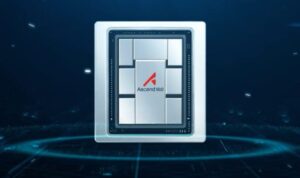Steps to Install and Enhance DeepSeek Locally

## DeepSeek: Your Guide to Installation and Setup
DeepSeek is an advanced AI model ideal for deep learning tasks including natural language processing and code generation. This article provides a comprehensive guide on its installation, system requirements, and performance optimizations for various operating systems.
## System Requirements for DeepSeek
To run DeepSeek efficiently, having the right hardware is vital. Below is an overview of both minimum and optimal hardware requirements.
### Minimum Hardware Requirements
– **GPU**: NVIDIA RTX 3090 or similar (24GB VRAM recommended)
– **CPU**: Intel i7 (10th Generation) or AMD Ryzen 7 equivalent
– **RAM**: 32GB (64GB recommended for larger models)
– **Storage**: At least a 512GB SSD (NVMe preferred)
### Optimal Hardware Setup
For the best performance of DeepSeek, consider the following:
– **GPU**: NVIDIA A100 or RTX 4090 (48GB VRAM for larger models)
– **CPU**: AMD Threadripper or Intel Xeon for more cores
– **RAM**: More than 128GB to capably manage large datasets
– **Storage**: A 2TB NVMe SSD along with a backup HDD
DeepSeek ideally runs in Linux-based cloud environments, but options are available for Mac (Apple Silicon) and Windows, albeit with additional configurations.
## Installing DeepSeek on a Mac
### Challenges with Mac Systems
– **CUDA Support**: DeepSeek models typically require CUDA, which is not supported by Apple Silicon.
– **Metal Performance Shaders (MPS)**: On Mac, you will need to rely on MPS instead of CUDA.
– **Performance**: Expect slower performance without a dedicated GPU.
### Step-by-Step Installation
#### Step 1: Install Homebrew and Dependencies
To install Homebrew, run:
“`bash
/bin/bash -c “$(curl -fsSL https://raw.githubusercontent.com/Homebrew/install/HEAD/install.sh)”
Then, install the necessary dependencies:
brew install cmake protobuf git-lfsStep 2: Create a Virtual Environment
Establish a virtual environment to avoid conflicts:
python3 -m venv deepseek_env
source deepseek_env/bin/activate
pip install --upgrade pipStep 3: Install DeepSeek and vLLM
DeepSeek works best with vLLM, necessary for MPS support:
pip install vllm torch transformers accelerate
pip install deepseek-aiStep 4: Run DeepSeek Model with MPS
You can then execute DeepSeek as follows:
from transformers import AutoModelForCausalLM, AutoTokenizer
import torchmodel_id = "deepseek-ai/deepseek-coder-6.7B"
device = "mps" if torch.backends.mps.is_available() else "cpu"
tokenizer = AutoTokenizer.from_pretrained(model_id)
model = AutoModelForCausalLM.from_pretrained(model_id).to(device)
prompt = "Explain the theory of relativity in simple terms."
inputs = tokenizer(prompt, return_tensors="pt").to(device)
outputs = model.generate(**inputs, max_length=100)
print(tokenizer.decode(outputs[0], skip_special_tokens=True))
Step 5: Install a GUI Interface
For a user-friendly interface, you can set up the Text Generation Web UI:
git clone https://github.com/oobabooga/text-generation-webui.git
cd text-generation-webui
pip install -r requirements.txtStart the UI with:
python server.py --model deepseek-ai/deepseek-coder-6.7B --device mpsNow, you can access it through your browser at https://localhost:5000.
Installing DeepSeek on PC (Windows/Linux)
Windows Setup Challenges
- vLLM: It may not run natively on Windows.
- Best Performance: Achieving this may require CUDA and the Windows Subsystem for Linux (WSL).
Installation Steps on Windows
Step 1: Install WSL
wsl --installOnce installed, open a terminal and update the system:
sudo apt update && sudo apt upgrade -yStep 2: Install NVIDIA CUDA and Python
For users with NVIDIA GPUs:
sudo apt install -y nvidia-cuda-toolkit
sudo apt install python3 python3-venv python3-pipStep 3: Create a Virtual Environment
python3 -m venv deepseek_env
source deepseek_env/bin/activateStep 4: Install DeepSeek Model and vLLM
For systems with an NVIDIA GPU, install:
pip install vllm torch transformers accelerate
pip install deepseek-aiFor CPU-only setups:
pip install torch torchvision torchaudio --index-url https://download.pytorch.org/whl/cpuStep 5: Run the DeepSeek Model
Follow the earlier Python code examples similar to those shown for Mac to generate text with DeepSeek.
GUI Installation Options for PCs
For an easier experience, consider using the LM Studio, which simplifies the setup and operation of AI models for users on both Windows and Mac systems.
Efficient Deployment Practices
To optimize the performance of DeepSeek, consider the following strategies:
- Fine-Tuning: Customize DeepSeek for your specific use case to enhance efficiency.
- Batch Processing: Group input requests to reduce processing time and improve throughput.
- Using Inference Servers: Streamline the serving of models with options like TorchServe or FastAPI.
- Monitoring and Profiling: Utilize tools like NVIDIA Nsight Systems to identify and resolve bottlenecks in performance.
By adopting these best practices, users can significantly enhance the speed and effectiveness of DeepSeek in their respective applications.
Please follow and like us:






